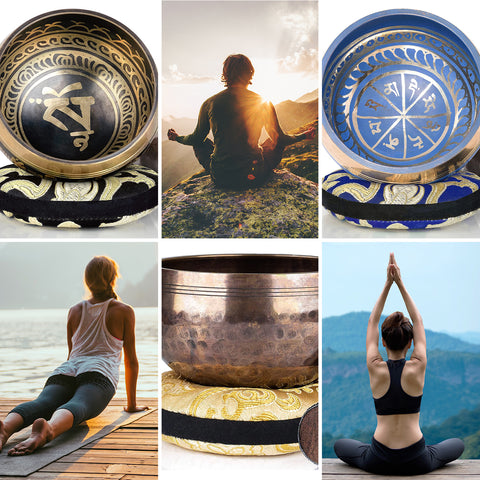When we meditate, does it matter how we sit? To be honest, your posture matters everywhere. People with good posture breathe properly and may even enjoy better digestion. During meditation, the right posture supports your ability to stay put and tune in. That’s probably why people have been sitting in a similar posture for thousands of years.
The seven-point posture is foundational to classic meditation practice. Stay mindful of these seven points, and see if your meditation practice improves.
1. Sitting
Surely, you’ve seen photos and artistic depictions throughout the ages of meditators sitting in lotus. However, sitting in this advanced pose isn’t the only option. You can simply sit cross-legged, upright in a chair, on the floor with legs stretched in front of you. The main point is to have your seat firmly rooted onto another surface. From there, we refine our posture with the following seven adjustments.
2. The Elongated Spine
Spinal compression in meditation? Never. Be sure you are not slumping or rounding through the spine in any way. Imagine that a string is pulling you up from the crown of your head. When you elongate your spine like this, locating your center of gravity, it should feel like your top half is floating.
3. Hand Placement
If you want to avoid fidgeting or readjusting after you begin, settle your hands in place now. Consciously sense and release tension, and place them gently at your sides, on your knees, or in your lap. How you choose to sit will dictate the most comfortable position for your hands.
4. Soft Shoulders
The neck and shoulders are a commonplace where we unconsciously store tension. A great deal of these seven points targets this. Lift your shoulders and drop them. Imagine leading the posture with your chest, so the shoulders sit back ever so slightly, and the heart is open.
5. Chin In
Even with an elongated spine, we can maintain tension in the neck. Tuck the chin in just a bit. This will help you get that balanced, floating sensation you feel when your meditation posture is just right. You’ll notice that with a slight tuck of the chin, you’re not looking directly up or down. Your main line of sight falls somewhere low to the ground several yards ahead of you.
6. Parting the Teeth
Now that the neck and shoulders are in a prime relaxation position, the final two points focus on the face. Unclench the jaw and part the teeth slightly while keeping the lips closed. Let the tongue rest naturally on the palate.
7. Relaxing the Gaze
Softening your gaze is important even if you meditate with your eyes closed. For a meditation gaze, we direct our eyes toward an area a few feet in front of us, but we do not focus intently. We let the eyes rest lazily in this general area.
Once you’ve taken care of your seven-point meditation posture, you can begin focusing on your breath. Meditate for 30 minutes, or just go for five - you’ll benefit either way.
How do you prefer to sit in meditation? Do you keep your eyes closed? Let us know in the comments.
Need help on your next singing bowl purchase.
Take our Interactive Singing Bowl Selector and find the PERFECT bowl for you!







Leave a comment